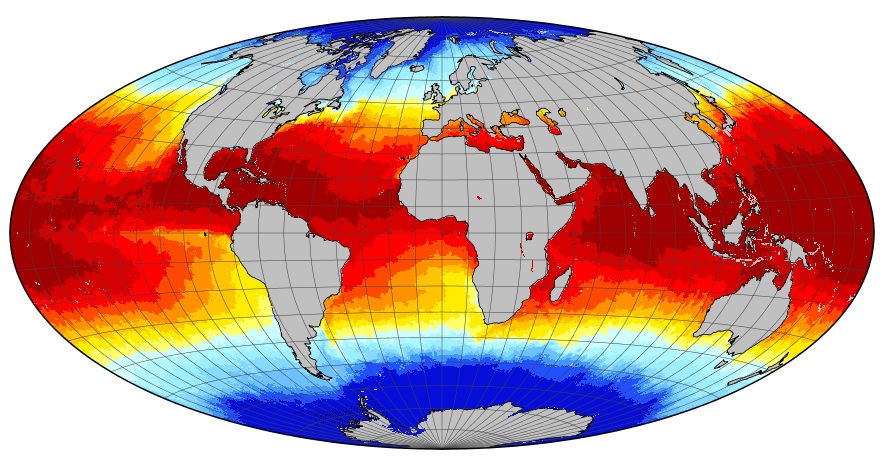PO.DAAC
Type of resources
Keywords
Contact for the resource
Provided by
Formats
Representation types
status
Resolution
-

A Group for High Resolution Sea Surface Temperature (GHRSST) gap-free (L4) Sea Surface Temperature (SST) analysis produced daily on an operational basis by the Danish Meteorological Institute (DMI) using an optimal interpolation (OI) approach on a global 0.05 degree grid. Whereas along swath observation data essentially represent the skin or sub-skin SST, the L4 SST product is defined to represent the foundation (SSTfnd). SSTfnd is defined within GHRSST as the temperature at the base of the diurnal thermocline. It is so named because it represents the foundation temperature on which the diurnal thermocline develops during the day. SSTfnd changes only gradually along with the upper layer of the ocean, and by definition it is independent of skin SST fluctuations due to wind- and radiation-dependent diurnal stratification or skin layer response. SSTfnd corresponds to the temperature of the upper mixed layer which is the part of the ocean represented by the top-most layer of grid cells in most numerical ocean models. It is never observed directly by satellites, but it comes closest to being detected by infrared and microwave radiometers during the night, when the previous day's diurnal stratification can be assumed to have decayed. The processing combines night-time GHRSST L2P skin and subskin SST observations from several satellites. The data is inter-calibrated and bias corrected before being merged and interpolated using an optimal interpolation scheme to provide daily gap-free fields. The optimal interpolation scheme uses the previous days analysis as a background field. An ice field from the EUMETSAT OSI-SAF is used to mask out areas with ice.
 Catalogue PIGMA
Catalogue PIGMA